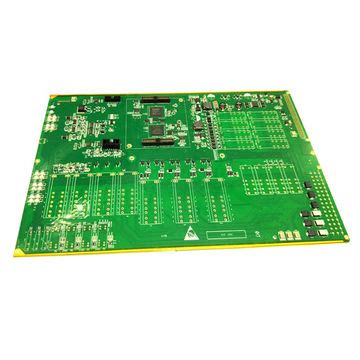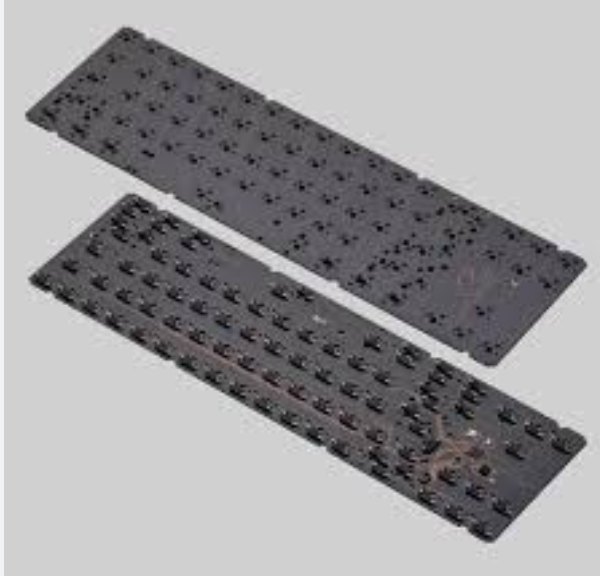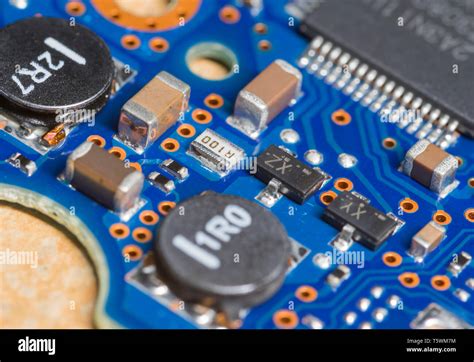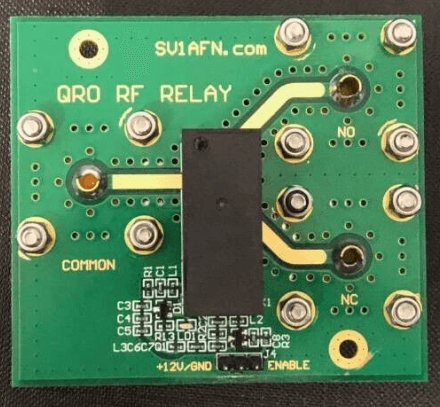High speed pcb laminate
Advances In High Speed PCB Laminate Materials
The rapid evolution of electronic devices has necessitated significant advancements in high-speed printed circuit board (PCB) laminate materials. As the demand for faster, more efficient, and compact electronic systems continues to grow, the materials used in PCB fabrication must keep pace to ensure optimal performance. High-speed PCB laminates are critical in supporting the high-frequency signals and minimizing signal loss, which are essential for modern applications such as telecommunications, computing, and automotive electronics.
One of the primary drivers behind the development of advanced high-speed PCB laminate materials is the need to manage signal integrity.
As signal frequencies increase, traditional PCB materials such as FR-4 become less effective due to their higher dielectric constant and loss tangent. These properties can lead to signal degradation, crosstalk, and electromagnetic interference (EMI), which are detrimental to the performance of high-speed circuits. Consequently, material scientists and engineers have focused on developing laminates with lower dielectric constants and loss tangents to mitigate these issues.
Polytetrafluoroethylene (PTFE) and other advanced polymers have emerged as popular choices for high-speed PCB laminates.
PTFE, commonly known by the brand name Teflon, offers excellent electrical properties, including a low dielectric constant and minimal signal loss. Additionally, PTFE-based laminates exhibit superior thermal stability and chemical resistance, making them suitable for a wide range of high-frequency applications. However, PTFE’s inherent mechanical properties, such as its tendency to deform under pressure, pose challenges during the manufacturing process. To address these challenges, composite materials that combine PTFE with reinforcing fillers like glass fibers have been developed, providing a balance between electrical performance and mechanical robustness.
Another significant advancement in high-speed PCB laminate materials is the use of liquid crystal polymer (LCP).
LCPs offer a unique combination of low dielectric constant, low loss tangent, and excellent dimensional stability. These properties make LCPs ideal for high-frequency applications, particularly in the microwave and millimeter-wave frequency ranges. Moreover, LCPs exhibit low moisture absorption, which is crucial for maintaining signal integrity in humid environments. The ability to process LCPs using standard PCB manufacturing techniques further enhances their appeal, enabling seamless integration into existing production lines.
In addition to PTFE and LCP, other materials such as modified epoxy resins and cyanate esters have also been developed to meet the demands of high-speed applications.
These materials offer a compromise between cost and performance, providing improved electrical properties compared to traditional FR-4 while being more affordable than PTFE and LCP. Modified epoxy resins, for instance, can be engineered to achieve lower dielectric constants and loss tangents, making them suitable for mid-range high-frequency applications.
The continuous advancement in high-speed PCB laminate materials is also driven by the need for miniaturization and higher component density.
As electronic devices become smaller and more complex, the PCB materials must support finer line widths and tighter spacing between traces. Advanced laminates with enhanced dimensional stability and reduced coefficient of thermal expansion (CTE) are essential to achieve the precision required for high-density interconnect (HDI) designs.
In conclusion, the development of high-speed PCB laminate materials is a critical aspect of advancing modern electronic systems. The ongoing research and innovation in this field aim to address the challenges posed by higher signal frequencies, miniaturization, and increased component density. By leveraging materials such as PTFE, LCP, and modified epoxy resins, engineers can design PCBs that meet the stringent performance requirements of today’s high-speed applications, ensuring reliable and efficient operation in a wide range of industries.

Benefits Of Using High Speed PCB Laminate In Modern Electronics
High speed PCB laminate has become an essential component in the development of modern electronics, offering a multitude of benefits that enhance the performance, reliability, and efficiency of electronic devices. As the demand for faster, more powerful, and more compact electronic devices continues to grow, the importance of high speed PCB laminate cannot be overstated. This advanced material is specifically designed to meet the rigorous requirements of high-frequency applications, making it an indispensable asset in the electronics industry.
One of the primary benefits of using high speed PCB laminate is its ability to support high-frequency signal transmission with minimal signal loss.
Traditional PCB materials often struggle to maintain signal integrity at higher frequencies, leading to issues such as signal degradation and electromagnetic interference. High speed PCB laminate, on the other hand, is engineered to minimize these problems by offering superior dielectric properties and low dissipation factors. This ensures that signals can travel through the PCB with minimal attenuation, resulting in faster and more reliable data transmission.
In addition to improved signal integrity, high speed PCB laminate also offers enhanced thermal management capabilities.
As electronic devices become more powerful, they generate more heat, which can negatively impact performance and longevity. High speed PCB laminate materials are designed to efficiently dissipate heat, reducing the risk of thermal-related failures and ensuring that devices can operate at optimal temperatures. This is particularly important in applications such as telecommunications, data centers, and high-performance computing, where maintaining stable temperatures is crucial for reliable operation.
Another significant advantage of high speed PCB laminate is its ability to support higher circuit densities.
Modern electronic devices are becoming increasingly compact, necessitating the use of smaller and more densely packed PCBs. High speed PCB laminate materials are capable of supporting fine line widths and tight spacing, allowing for the creation of complex, multi-layered PCBs that can accommodate a large number of components in a limited space. This not only enables the development of smaller and more portable devices but also contributes to improved performance by reducing the distance that signals need to travel.
Furthermore, high speed PCB laminate materials are known for their excellent mechanical properties, which contribute to the overall durability and reliability of electronic devices.
These materials are typically more resistant to environmental factors such as moisture, chemicals, and mechanical stress, ensuring that the PCBs can withstand harsh operating conditions. This is particularly important in industries such as aerospace, automotive, and industrial electronics, where devices are often exposed to challenging environments.
The use of high speed PCB laminate also facilitates the implementation of advanced manufacturing techniques, such as high-density interconnect (HDI) technology and microvia drilling. These techniques enable the production of PCBs with higher layer counts and more intricate designs, further enhancing the performance and functionality of electronic devices. By leveraging the capabilities of high speed PCB laminate, manufacturers can push the boundaries of what is possible in electronic design and innovation.
In conclusion, the benefits of using high speed PCB laminate in modern electronics are manifold. From improved signal integrity and thermal management to higher circuit densities and enhanced durability, these advanced materials play a crucial role in meeting the demands of today’s high-performance electronic devices. As technology continues to evolve, the importance of high speed PCB laminate will only grow, driving further advancements in the electronics industry and enabling the development of faster, more efficient, and more reliable devices.

Design Considerations For High Speed PCB Laminate
When designing high-speed printed circuit boards (PCBs), the choice of laminate material is a critical factor that significantly influences the performance and reliability of the final product. High-speed PCBs are used in applications where signal integrity and minimal signal loss are paramount, such as in telecommunications, computing, and advanced electronic devices. Therefore, understanding the design considerations for high-speed PCB laminate is essential for engineers and designers aiming to achieve optimal functionality.
One of the primary considerations in selecting a high-speed PCB laminate is the dielectric constant (Dk) of the material.
The dielectric constant affects the signal propagation speed and impedance of the PCB traces. Materials with a low and stable dielectric constant are preferred because they ensure consistent signal transmission and reduce the risk of signal distortion. Additionally, the dielectric constant should remain stable over a wide frequency range to accommodate the varying signal frequencies encountered in high-speed applications.
Another crucial factor is the dissipation factor (Df), which measures the energy loss as signals travel through the PCB material.
A low dissipation factor is desirable as it minimizes signal attenuation and power loss, thereby preserving signal integrity. High-speed applications often require materials with a low Df to maintain the quality of high-frequency signals and prevent degradation over long distances.
Thermal management is also a significant consideration in high-speed PCB design.
High-speed circuits generate substantial heat, and the laminate material must effectively dissipate this heat to prevent thermal damage and ensure reliable operation. Materials with high thermal conductivity are preferred as they facilitate efficient heat transfer away from critical components. Additionally, the coefficient of thermal expansion (CTE) of the laminate should be compatible with other materials used in the PCB to prevent mechanical stress and potential failure due to thermal cycling.
Signal integrity is further influenced by the surface roughness of the copper traces on the PCB.
Smooth copper surfaces reduce signal loss and improve high-frequency performance. Therefore, the laminate material should support the use of low-profile copper to enhance signal transmission. Moreover, the choice of laminate should consider the manufacturing processes involved, ensuring that the material can withstand the etching, drilling, and plating processes without compromising its properties.
Environmental factors also play a role in the selection of high-speed PCB laminates.
The material should exhibit good moisture resistance to prevent changes in electrical properties due to humidity. Additionally, it should be resistant to chemical exposure and mechanical stress to ensure long-term reliability in various operating conditions.
Cost is another important consideration, as high-performance laminates can be significantly more expensive than standard materials.
Designers must balance the need for high-speed performance with budget constraints, selecting materials that provide the necessary electrical and thermal properties without excessive cost. In some cases, hybrid constructions using different materials for different layers of the PCB can offer a cost-effective solution while meeting performance requirements.
In conclusion, the design considerations for high-speed PCB laminate encompass a range of factors including dielectric constant, dissipation factor, thermal management, surface roughness, environmental resistance, and cost. By carefully evaluating these aspects, designers can select the appropriate laminate material to ensure optimal performance, reliability, and cost-effectiveness in high-speed applications. The choice of laminate is a critical step in the PCB design process, directly impacting the overall functionality and success of the final product.
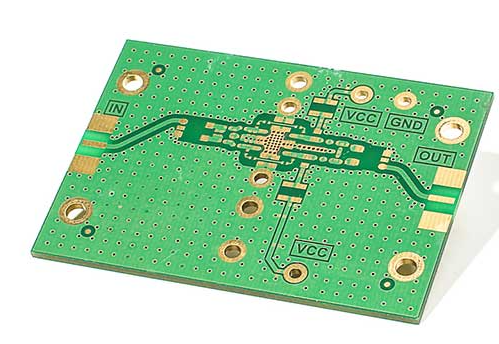
Comparing High Speed PCB Laminate Types For Optimal Performance
When designing high-speed printed circuit boards (PCBs), selecting the appropriate laminate material is crucial for ensuring optimal performance. The choice of laminate can significantly impact signal integrity, thermal management, and overall reliability of the PCB. Therefore, understanding the different types of high-speed PCB laminates and their respective properties is essential for engineers and designers aiming to achieve the best possible outcomes in their projects.
One of the most commonly used high-speed PCB laminates is FR-4, a glass-reinforced epoxy laminate.
While FR-4 is widely recognized for its versatility and cost-effectiveness, it may not always be the best choice for high-speed applications due to its relatively high dielectric constant (Dk) and dissipation factor (Df). These properties can lead to signal loss and impedance mismatches, which are detrimental to high-frequency signal transmission. Consequently, for applications requiring higher performance, alternative laminates with lower Dk and Df values are often preferred.
Polytetrafluoroethylene (PTFE) laminates, commonly known by the brand name Teflon, are a popular choice for high-speed and high-frequency applications.
PTFE laminates offer excellent electrical properties, including a low dielectric constant and low dissipation factor, which minimize signal loss and ensure better signal integrity. Additionally, PTFE laminates exhibit superior thermal stability and chemical resistance, making them suitable for demanding environments. However, PTFE laminates can be more challenging to process and are generally more expensive than FR-4, which may limit their use in cost-sensitive applications.
Another notable high-speed PCB laminate is the ceramic-filled hydrocarbon laminate.
These laminates combine the benefits of ceramic materials with the processability of traditional PCB materials. Ceramic-filled hydrocarbon laminates offer a low dielectric constant and low dissipation factor, similar to PTFE laminates, but with improved mechanical stability and ease of fabrication. This makes them an attractive option for high-speed applications where both electrical performance and manufacturability are critical considerations.
In addition to PTFE and ceramic-filled hydrocarbon laminates, liquid crystal polymer (LCP) laminates are gaining popularity in high-speed PCB design.
LCP laminates provide excellent electrical properties, including a low dielectric constant and low dissipation factor, along with exceptional thermal and mechanical stability. These characteristics make LCP laminates suitable for high-frequency applications, such as microwave and millimeter-wave circuits. Furthermore, LCP laminates offer low moisture absorption, which is advantageous in environments with varying humidity levels. However, similar to PTFE laminates, LCP laminates can be more expensive and may require specialized processing techniques.
When comparing high-speed PCB laminates, it is essential to consider not only their electrical properties but also their thermal performance.
High-speed circuits often generate significant heat, and effective thermal management is crucial to prevent overheating and ensure reliable operation. Laminates with high thermal conductivity, such as ceramic-filled hydrocarbon laminates, can help dissipate heat more efficiently, thereby enhancing the overall performance and longevity of the PCB.
In conclusion, selecting the right high-speed PCB laminate involves a careful evaluation of various factors, including dielectric properties, thermal performance, mechanical stability, and cost. While FR-4 remains a popular choice for many applications, alternative laminates such as PTFE, ceramic-filled hydrocarbon, and LCP offer superior performance for high-speed and high-frequency circuits. By understanding the unique characteristics of each laminate type, engineers and designers can make informed decisions that optimize the performance and reliability of their high-speed PCB designs.

